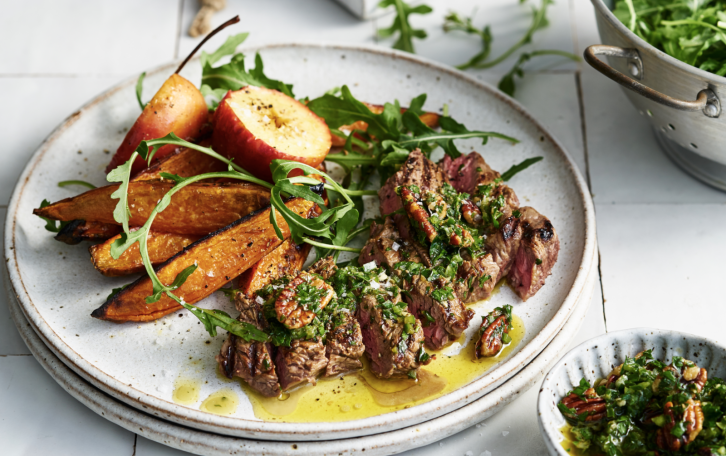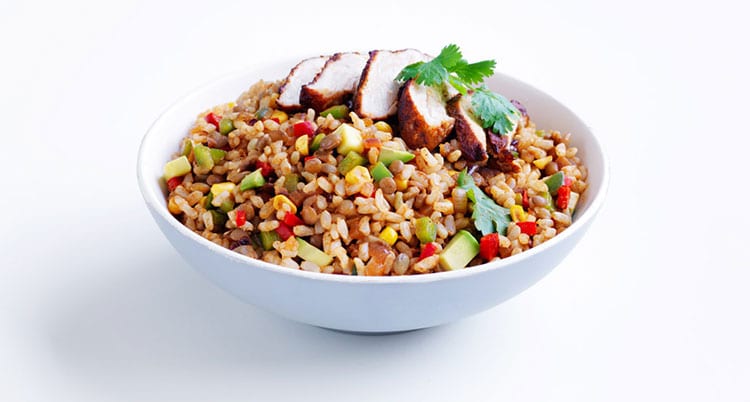Kate Save, Clinical Dietitian and CEO and Founder of Be Fit Food explains how to care for your iron levels and charge your energy.
Are you finding yourself feeling constantly tired, inexplicably lethargic, run down, moody or unable to concentrate? Outside of the very unusual circumstances unfolding around us that are wreaking havoc on our bodies, it could be very possible that you’re suffering from iron deficiency.
Iron deficiency is one of the most common and widespread nutritional deficiencies in the world, especially among children and women of childbearing age. In Australia, approximately 1 in 5 women under the age of 50 have some form of iron deficiency1. But despite these numbers, iron disorders often go undetected and this can lead to a number of health issues.
Simply put, without enough iron the human body cannot function properly. Iron plays a vital role in the production of red blood cells, heart health, immune function, energy levels and healthy brain function. The average person needs to absorb just 1mg of iron each day to stay healthy – 1.5mg for women who are menstruating2.
The symptoms of iron deficiency are often varied and can be obscure and subtle — hence why recognising them is often the biggest hurdle to getting a diagnosis. Some of the most common indicators that you’re potentially iron deficient include:
- Weakness or dizziness
- Fatigue, exhaustion and lack of energy
- Shortness of breath
- Brittle nails
- Difficulty doing high intensity exercise
- Hair loss
- Sore or swollen tongue
- Heart palpitations
- Pale skin or cracked skin around the mouth
- Cravings for unusual substances with no nutritional value such as soil or ice
- Restless leg syndrome

The causes of iron deficiency vary from person to person but some common reasons include inadequate iron intake due to poor diet or non-meat diets, age (toddlers and adolescents), genetics, medical conditions such as coeliac disease, and heavy periods and pregnancy in women.
While iron deficiency can have negative effects on your health and everyday life, it can often be relatively easy to treat. If you find that you’re suffering from some of these symptoms and suspect iron deficiency, visit your doctor for testing. If you’re found to be low on iron, here are some ways to get your levels back on track. Depending on the outcomes of your diagnosis, recommended treatments will vary.

Assess your diet
Often a diet that is high in iron is the key to restoring balance in the body. Iron-rich foods include: Red meat, poultry, fish, eggs, dried beans and lentils, green leafy vegetables, nuts and seeds, eggs wholegrain breads and cereals.
However, it’s important to remember that not all foods that contain iron are made equal. There are two types of iron: haem iron (found in flesh foods, such as red meat, chicken and fish) and non-haem iron (found in plant foods).
Haem iron is absorbed four to five times more easily than non-haem iron, but the absorption of non-haem iron is three times greater when foods containing vitamin C are eaten in the same meal.
So, to get the most out of your non-haem iron sources — your vegetarian foods — pair them with vitamin C packed foods.

Some foods rich high in vitamin C include; oranges, berries, citrus fruits, capsicum, broccoli, cauliflower and leafy greens.
If you don’t cook often, look for pre-prepared meals that are nutritionally balanced to ensure that you don’t miss out on any important vitamins and minerals. For example, Be Fit Food contains 4-12 vegetables (haem and non-haem iron) to ensure you’re getting everything you need for optimal body function.
Take an iron supplement
Increasing the dietary intake of iron alone is sometimes not sufficient enough to correct an iron deficiency, and iron supplementation may be required. Depending on the cause of your iron deficiency, a supplement might be recommended by your healthcare professional. Similarly, to dietary intake of iron, look out for supplements that contain Vitamin C to help your body absorb iron. A good recommendation is Ferrogen Iron + Vitamin C. It contains both Ferrous Sulphate, a compound effectively used for the treatment of medically diagnosed iron deficiency, and Vitamin C. But remember, vitamins should not replace a balanced diet.
You might need an iron infusion
If consuming more iron-rich foods or taking supplements isn’t working for you, it might be the case that you need to get an iron infusion.
An iron infusion is usually only required if your iron levels are so low that increasing your daily intake of iron through diet or taking iron supplements would be too slow in bringing your iron levels back to normal. For example, due to significant blood loss or in cases of advance anaemia. The procedure is delivered to your body intravenously and can only be prescribed and administered by a doctor.
First things first, before taking any steps to treat low iron levels it’s important to consult a healthcare professional to ascertain if you do in fact have an iron deficiency. A doctor will be able to help you understand the cause and potentially rule out if there’s any serious underlying health conditions that may be causing this.
*ALWAYS READ THE LABEL. FOLLOW THE DIRECTIONS FOR USE. IF SYMPTOMS PERSIST TALK TO YOUR HEALTH PROFESSIONAL







